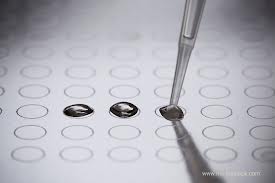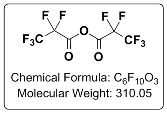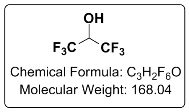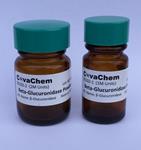MALDI (Matrix Assisted Laser Desorption Ionization) was first introduced in 1985 and since then, MALDI-MS has been a common means of analysis for large biomolecules (proteins, peptides, sugars), as well as organic molecules such as polymers. There is also increasing interest in lipid analysis1. There is no denying that MALDI methods are revolutionary, for they allow soft ionization which permits intact analysis of compounds that would easily fragment through other analysis methods. Several matrices have been developed, to respond to various demands in the field. A couple of the more versatile matrices for MALDI-MS are 2,5-dihydroxybenzoic acid (DHB) and α-Cyano-4-hydroxycinnamic acid (CHCA). However, before you decide which matrix best suits the experiments you want to perform, there are a few things you you might want to consider. While this article is far from all inclusive, its intention is solely to help keep a few things in mind when getting started.
First, the matrix you’re using should have a strong absorbance at the laser wavelength you will use to irradiate. A strong absorbance of the wavelength used is critical to ensure optimal ionization of the compound to be analyzed. DHB and CHCA are convenient for many wavelengths, ranging from 300 to 360 nm, with λ maximums of both of these matrices at 337 nm and 355 nm. Not surprisingly, one of the most common lasers used in UV MALDI matrix is centered at 337 nm (N2 laser).
One way to aide in determining if your analyte / matrix ratio is optimal is to compare the UV-VIS spectra of the matrix to that of its analyte / matrix mixture. Ideally, the λmax should not shift significantly, or this would indicate that the ionization conditions will likely be less than optimal, as this will likely decrease energy transfer from the 337 nm N2 laser or other laser employed. Another lement to consider is the solubility of both your matrix and your analyte compound. Ideally, both should be highly soluble in one single, volatile solvent or cosolvent. While there are methods to overcome solubility problems (such as the sandwich technique2 or the overlayer method3), these are usually less than optimal and increases sample preparation time, especially when analyzing large numbers of samples. DHB is particularly useful in these circumstances, as it is quite soluble in a wide range of solvents, including water and aqueous cosolvents. Also, once the droplet is drying on the plate, the matrix should effectively co-crystallize with the analyte, which is important for spectral reproducibility1. DHB is also useful in this capacity, as it is miscible with a wide range of molecules and is highly crystalline.
The matrix should be appropriately acidic or basic, depending on whether you’re analyzing for positive or negative ions, and the pKa of the sample1. For typical protein and peptides MALDI-MS, 2,5-dihydroxybenzoic acid (DHB) and CHCA are commonly used, with pKa values of 2.95 and 1.17 respectively. Not surprisingly, other isomers of dihydroxybenzoic acid also lend themselves to other applications in MALDI-MS, where analyte ionization is more optimal with a matrix with a differing pKa. This effect has been thoroughly evaluated on a various PEG polymers, and revealed that the best ionization in fact came from 2,6- Dihydroxybenzoic acid (CovaChem 15107)4, which has a lower pKa than the more commonly used 2,5-Dihydroxybenzoic acid counterpart (CovaChem 15102).
The final characteristic which is critical to ionization is having an adequately clean sample to analyze, and a sufficiently pure MALDI matrix that is free from metals and other ionic compounds that have proven to be detrimental to ionization and M+1 ion formation. This characteristic of the sample / matrix combination is particularly important, when attempting to decipher low level analytes from the baseline. Furthermore, the presence of metal ions and other impurities can also lend themselves to false identification of ions.
While this article is very general, it is hoped that this may aide in considering the key concepts associated with MALDI ionization when preparing samples and choosing the appropriate matrix. To conclude, CHCA and DHB are very useful matrices that serve as a good starting point for your MALDI-MS analyses of peptide fragments and proteins below 5,000 Da. DHB is also a good starting point MALDI matrix for carbohydrates, lipids, and some synthetic polymers. Please stay tuned for CovaChem’s MALDI Matrix selection guide, which will provide even more of a guide towards selecting the best MALDI matrix for you samples analysis, which will be published soon.
References:
1. Schiller, J. et al. Eur. Biophys. J. 36 (2007), 517-527.
2. Liang Li, Rafael E. Golding and Randy M. Whittal. J. Am. Chem. Soc., 118 (1996) 11662-11663.
3. Yuqin Dai, Randy Whittal and Liang Li. Anal. Chem. 71 (1999) 1087-1091.
4. Aera Lee, Hyo-Jik Yang, Yangsun Kim, Jeongkwon Kim. Bull Korean Chem Soc. 30 (2009) 1127-1130.





